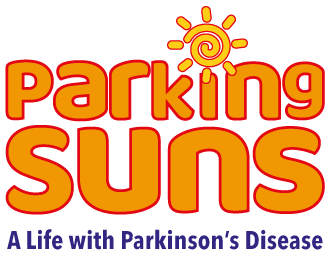
*****************************
By Janet Campbell, guest contributor
*****************************
Parkinson’s disease affects movement, mood, and energy in ways that change daily life. Medications help, but symptoms often persist or evolve. As needs shift, many people with PD turn to natural treatments, therapeutic movement, and lifestyle changes for support. These approaches don’t promise a cure, but they can offer relief. They work by calming inflammation, restoring rhythm, and reconnecting the body to mind. For some, that’s enough to move through the day with a little more steadiness.
The Role of Diet: Anti-Inflammation as a Starting Point
Inflammation plays a key role in many chronic conditions, and Parkinson’s is no exception. A plant-based diet, rich in polyphenols and flavonoids, is gaining attention for its potential to slow down disease progression—not cure it, but cool it. Studies have found that shifting toward more legumes, leafy greens, and whole grains may help regulate oxidative stress and support neuroprotection. What’s striking isn’t just the nutritional content, but the way certain foods function almost medicinally. You might be surprised by how something as basic as dietary antioxidants reduce inflammation, especially when consistently present over time. There’s no trendy superfood here—just an accumulation of plant intelligence doing quiet work in the background.
The Daily Setup: Lifestyle as Circadian Engineering
Routine isn’t just comforting—it’s neurologically stabilizing. For many Parkinson’s patients, unpredictability is exhausting. So structure becomes a tool: sleeping at the same hour, eating at intervals, minimizing spikes in cortisol, and maximizing melatonin alignment. There’s now broader clinical interest in how lifestyle medicine improves Parkinson’s outcomes over time. It’s not about moral discipline—it’s about energy conservation, brain support, and improving medication responsiveness. Think less about rigid rules, more about creating rhythm the brain can rely on. A stable day, repeated consistently, might be more powerful than the next supplement trend or adjustment to dosage.
Plant-Based Approaches to Pain: Four Botanicals Worth Considering
Pain is often undertreated in Parkinson’s—and over-medicated when it is. For those searching for gentler alternatives, botanicals offer more than folklore. First, there’s corydalis, a traditional Chinese herb whose active alkaloids may modulate pain receptors similarly to opioids—but without dependency risk. Second, devil’s claw, long used in African healing systems, has been studied for reducing muscle and joint pain through its anti-inflammatory properties. Then comes ashwagandha, the adaptogen known for modulating stress and supporting nervous system resilience. Its compounds interact with neurotransmitter pathways in ways still being explored. And finally, a newer entrant: THCa. Unlike THC, it’s non-psychoactive and appears to influence inflammation and pain perception through the endocannabinoid system. Some users report noticeable relief using THCa Diamond products, which deliver a purified format of the compound with minimal interference. These aren’t cure-alls—but they may round out a pain strategy with fewer systemic trade-offs.
The Bigger Picture: What Cannabinoids May Offer Beyond Pain Relief
As the legal and scientific landscape evolves, cannabinoids are stepping out from the shadows of stigma. This isn’t about getting high—it’s about calming the chaos inside the nervous system. Cannabinoids, particularly THCa and CBD, interact with pathways related to inflammation, mitochondrial function, and neuroprotection. What makes them notable isn’t just their effects, but their adaptability. The body seems to use them differently depending on need, dosage, and formulation. Researchers have been mapping the neuroprotective effects of plant cannabinoids in relation to diseases like Parkinson’s, focusing on their antioxidant potential and ability to modulate immune responses. The science isn’t settled, but the direction is promising—especially for those looking for multi-layered approaches that don’t rely solely on dopamine replacement.
Movement That Repairs: Prescribed Exercise as Medicine
Not every exercise is good for everybody. But when Parkinson’s is part of your life, movement is non-negotiable. It’s not about burning calories or building muscle in the traditional sense—it’s about wiring better movement patterns and reinforcing balance. Physical therapy has long been recommended, but now neurologists are moving toward a model where prescribed exercise benefits are viewed with the same weight as medication. Rhythm-based movements—cycling, tai chi, dancing—appear to light up parts of the brain associated with coordination and fluidity. The best movement is the kind that doesn’t feel like performance—it feels like returning. That moment when you stand taller, breathe easier, or take one more step than you could yesterday is not just physical. It’s psychological. It says: I’m still adapting, and that means I’m still alive.
Somatic Wisdom: Yoga and the Body’s Feedback Loops
Western medicine often slices the body and mind into separate lanes. Yoga doesn’t. For people with Parkinson’s, that distinction matters. Mind-body integration isn’t a luxury—it’s a strategy for surviving disconnection. When the body moves with breath, something recalibrates. Tension softens. Reaction time smooths out. And yes, tremors may momentarily quiet. Emerging insights about how yoga improves balance and mobility highlight how specific postures and sequencing can strengthen proprioception, reduce falls, and restore confidence in movement. You don’t need to be flexible. You don’t even need a mat. You just need enough space to listen—both to the body and what it’s been trying to say through pain.
Living with Parkinson’s demands constant adjustment. Relief often comes in fragments: steady sleep, calming movement, foods that nourish, pain managed without fog. Each change supports the next. Together, they create space—space to move, rest, think clearly, and remain connected to who you are beyond the diagnosis.


